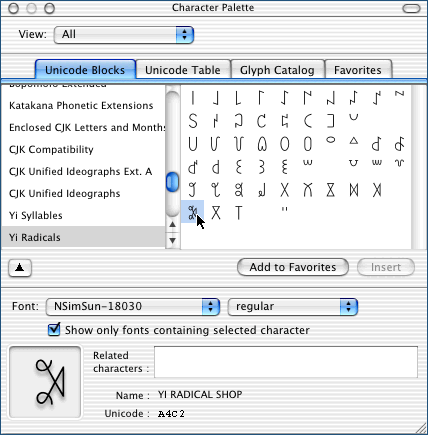
Traditional Chinese Fonts For Mac
Permalink to Bodhi Song (Ming) Typeface Chinese Font – Simplified Chinese Fonts – Traditional. About Source Han Sans Traditional Chinese. The Adobe Originals program started in 1989 as an in-house type foundry at Adobe, brought together to create original typefaces of exemplary design quality, technical fidelity, and aesthetic longevity. Today the Type team’s mission is to conduct original research and development for type at Adobe.
THL Toolbox > Fonts & Related Issues > Chinese Fonts & Related Issues
Chinese Fonts & Related Issues
Resources
Macintosh Resources for Chinese Fonts
El capitan vmware image. One can acquire skills on Xcode and use the new features supported by Mac OS X El Capitan and most importantly installing Applications on OS X El Capitan on VMware without necessarily having to install it. Running the OS X El Capitan on VMware on PC maybe somewhat hectic and may probably take a toll on one’s additional energy. Now run the Mac OS X 10.11 virtual machine in VMware, it will start successfully then wait a minute to let Mac OS start. Setting up Mac in VMware. When the virtual machine started, choose your country, if it wasn’t there then click on show all and select your country then click Continue.
General Unicode Resources
Chinese Unicode Resources
Introduction
There are three major encodings for Chinese fonts, two legacy encodings and Unicode. (As the Chinese characters are intimately related to the Japanese and Korean characters, the common character set for these three languages is often called CJK.) The two legacy encodings are Big5 and Guobiao (abbreviated GB). Big5 is used mainly for Traditional Chinese characters and is widely used in Taiwan and Hong Kong. GB is usually used for Simplified Chinese that is the standard for mainland China. GB has gone through several revisions. The latest is GB2312. However, neither the Big5 nor the GB encoding scheme can handle both Traditional and Simplified Chinese characters. On the other hand, the latest world-wide standard, Unicode, has provided code pages for each separately so that a single font can contain both sets of characters. Yet, the legacy encodings still dominate Chinese computing. This is due to the fact that the Big5 and Guobiao had already developed a large user-base prior to the advent of Unicode.
For viewers interested in either viewing web-pages with Chinese text or for using Chinese on their personal computer, it is necessary to have an adequate Chinese font installed on one's computer. The policy of THL is to use Unicode fonts, whenever possible, because Unicode provides a unique, unambiguated encoding for a majority of the world's languages. Any pages on the THL site that contain Chinese text will be encoded in Unicode. Thus, any Unicode Chinese font will work for displaying these pages. Some interesting discussions on Unicode in general and Chinese Unicode in particular may be found on the Unicode & Chinese Font Resources page.
Because each operating system deals with fonts in different ways, recommended fonts for two of the most prevalent operating systems (Windows and Mac) are given below.
Windows Chinese Fonts
To work with Chinese characters beyond plane 0 of the Unicode standard (Unicode CJK Extension A and B*) it is also necessary to install Microsoft's GB18030 support package for Windows 2000 & XP. This package includes a large (12 MB) Chinese font (SimSun18030.ttc).
Macintosh Chinese Fonts
Full implementation of Unicode arrived to the Mac environment with OS X. This version comes with a Unicode Chinese font and requires no special adjustments for display. For OS 9, one will need to have the Chinese language kit installed. This is supplied on the OS 9 CD. For more information, see the Platform-Specific Resources For Chinese page.